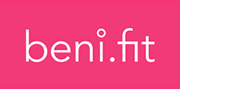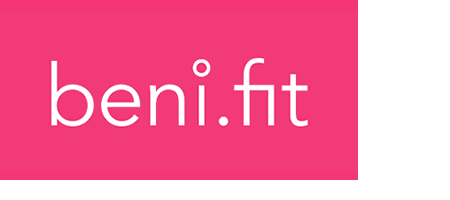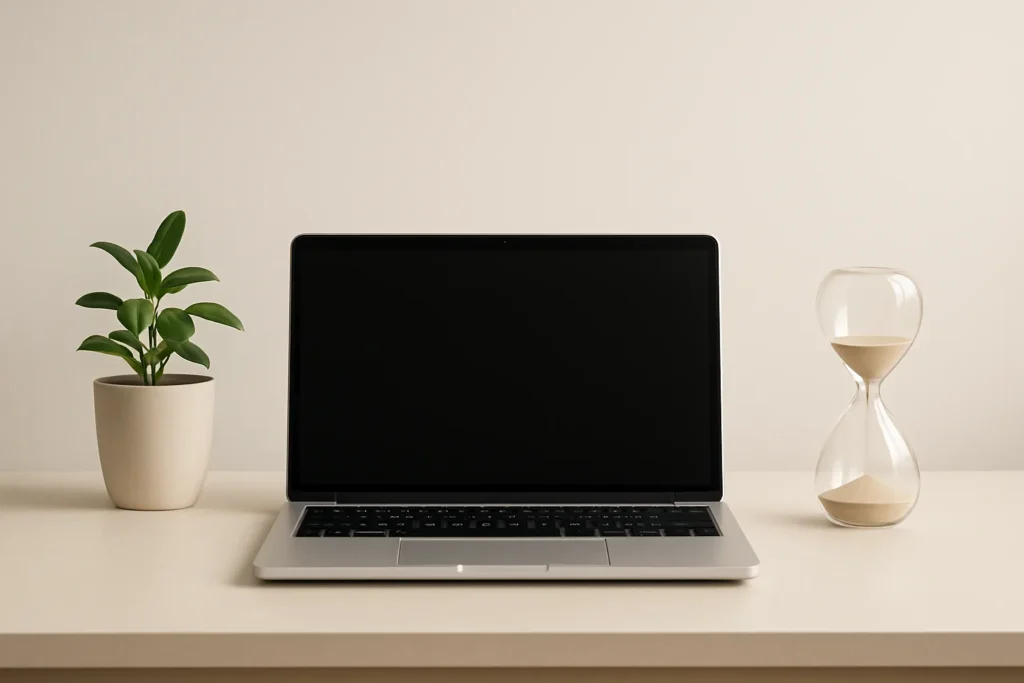Strategies for Minimizing Distractions and Improving Focus at Work
Discover effective strategies to enhance focus and minimize distractions in the workplace. This comprehensive guide draws upon insights from industry experts to provide practical solutions for improving productivity. Learn how to implement these proven techniques and transform your work habits for increased efficiency and success.
- Batch Communication for Uninterrupted Deep Work
- Implement Protected Deep Work Blocks
- Use a Parking Lot Document
- Regulate Blood Sugar for Better Focus
- Optimize Environment and Time for Peak Performance
- Put Your Phone Away to Improve Focus
- Create a Daily Compass Card
- Schedule Focused Work Sessions with Reminders
- Keep Phone Out of Reach Until Midday
- Treat Focus Time as a Customer Meeting
- Designate a Specific Workspace at Home
- Exercise Regularly to Boost Concentration
- Employ Single-Task Sprint Method
- Schedule Pomodoro Technique in Calendar
- Implement Structured Time-Blocking Approach
- Use a Sonic Tunnel for Productivity
- Work in Distraction-Free Public Spaces
Batch Communication for Uninterrupted Deep Work
One strategy that has truly transformed my focus is batching communication — turning off all notifications and setting two specific times each day to check emails, team chats, and messages. I inform my team that I’m offline except for emergencies, so I can tackle deep-work tasks without interruption.
At first, disconnecting felt uncomfortable, but I began finishing proposals, supply chain calls, and branding projects faster because my concentration wasn’t broken every ten minutes. Over time, I accomplished more by lunchtime than I used to by the end of the day.
The impact? Not just higher productivity, but lower stress and a greater sense of control over my schedule. It’s the single best change I’ve made for deep, distraction-free work.
 Nir Appelton
Nir Appelton
CEO, The CEO Creative
Implement Protected Deep Work Blocks
As a founder, one of the hardest lessons I’ve had to learn is that being busy doesn’t always mean being productive. Early in my journey, I prided myself on juggling calls, Slack messages, and a constant stream of emails. But at the end of many days, I realized I had been reacting more than creating. That was a wake-up call.
The strategy that’s had the biggest impact on my focus is what I call “protected deep work blocks.” I carve out two uninterrupted windows in my day — usually 90 minutes each — where all notifications are silenced, my calendar is blocked, and my team knows I’m off the grid unless there’s a true emergency. It sounds simple, but it required discipline. In the beginning, I had to fight the urge to “just check” an email or Slack thread, but eventually, it became a non-negotiable part of my rhythm.
What’s interesting is that this wasn’t just about personal productivity. I noticed that once I modeled this behavior, my team started doing the same. Instead of chasing constant notifications, they began structuring their days more intentionally too. It created a cultural shift where focused, high-quality work became more valued than instant responses.
The outcome has been profound. Those deep work blocks are where I’ve outlined our long-term vision, solved complex client problems, and even spotted opportunities we would have missed if I were stuck in reactive mode. On a personal level, it’s reduced burnout and given me more energy at the end of the day. On a business level, it’s led to better decisions and sharper execution.
Looking back, I realize the real benefit wasn’t just more productivity — it was reclaiming the mental clarity I needed to think like a CEO, not just a firefighter.
Use a Parking Lot Document
I started keeping a “parking lot” document open all day. It’s essentially a blank note where I record every random thought, task, or distraction that comes to mind. Instead of pursuing these thoughts, I park them.
The rule is that I can only review this document during breaks, never in the middle of deep work. It may sound simple, but it prevents the mental loop of “don’t forget this” that typically disrupts focus.
Since implementing this practice, I can actually complete a 90-minute block without context-switching, and my output feels like it has doubled without working longer hours.
 Austin Benton
Austin Benton
Founder & CEO, SpeakerDrive
Regulate Blood Sugar for Better Focus
By far my best (and most unusual) strategy for minimizing distractions is to regulate your blood sugar.
In psychology, people experience a phenomenon called “ego depletion,” where we effectively run out of self-regulation, causing people to procrastinate, distract themselves, or make poor decisions.
The brain consumes around 20% of our daily calories, and research clearly shows that blood sugar variability impacts our ability to concentrate.
As blood sugar levels fall, the brain struggles to keep up with normal tasks and signals to the body to stop what it’s doing.
This is often why people experience an energy lull in the mid to late afternoon. The blood sugar spike from lunch has come crashing down, leaving people feeling lethargic and distractible.
Fortunately, regulating blood sugar is quite simple and only requires a few steps. Firstly, get exercise when you can, especially after meals. Even a 10-minute walk post-meal can help avoid the spike and crash cycle.
Next, avoid large carbohydrate-heavy meals for lunch and instead opt for more protein.
Lastly, give yourself a small snack around mid-afternoon, which helps keep your levels high for the remainder of the day.
Following this advice has greatly helped my concentration, especially in the afternoon. Now, I actively schedule my most important tasks for the mid-afternoon, as I now find it much easier to concentrate.
 Ben Schwencke
Ben Schwencke
Chief Psychologist, Test Partnership
Optimize Environment and Time for Peak Performance
My strategy is rooted in preference and research. I start by prioritizing the environment. We know that natural light, outdoor views, and a designated and personalized workspace — with limited clutter — strongly contribute to focus. I know that my personal peak focus time is mid-morning, so I block this for strategic projects and wait for off-peak times when, as research confirms, my brain “relaxes” into a more innovative zone. I try to keep meetings later in the day as part of protecting my peak focus time, and I’m a huge fan of microbreaks, which I encourage my coaching clients to utilize too. The mini reboot helps sustain concentration, and we know microbreaks are connected to decreasing stress and boosting mood. I get much more accomplished when I use my strategy consistently!
 Dr. Natalie Pickering, PhD
Dr. Natalie Pickering, PhD
CEO, Founder, The Becoming Institute
Put Your Phone Away to Improve Focus
One of the simplest but most effective ways I’ve improved my focus is by putting my phone away, sometimes even two rooms away so I don’t hear it ring. What I noticed was surprising: I didn’t actually miss much.
When it is near me, I find myself getting distracted. But when it’s out of reach, I stay more immersed in my work, and the quality of my focus improves significantly.
There are rare moments when I need it, for example, for a one-time password or if I’m expecting an important call. But otherwise, keeping it away has become a habit. It has made a big difference in productivity, helping me complete deep work without constant interruptions.
 Chaitanya Sagar
Chaitanya Sagar
Founder & CEO, Perceptive Analytics
Create a Daily Compass Card
One strategy I use is creating a daily “Compass Card” on a 4×6 index card each morning before checking email. The card outlines my win condition for the day, three specific micro-steps, a 90-minute deep-work block, and a clear boundary to maintain focus. I review this card at 2 p.m. to stay on track throughout the day. This structured approach has significantly improved my ability to stay focused and maintain consistent productivity by providing clear direction and preventing me from getting pulled into reactive tasks.
 Jeanette Brown
Jeanette Brown
Personal and Career Coach; Founder, Jeanettebrown.net
Schedule Focused Work Sessions with Reminders
I implement focused work sessions throughout my day, dedicated 45-60 minute blocks where I silence notifications, close my email client, and concentrate on a single task. To maintain consistency with this practice, I leverage our reminders feature, which sends me prompts tied to specific projects and deadlines to start and end each focused session. This approach eliminates the mental burden of tracking these intervals myself.
The results have been remarkable. My work quality has improved significantly; I complete tasks more thoroughly with fewer errors, and I rarely carry unfinished items into the next day. This creates a more fluid workflow and frees up valuable mental bandwidth for creative thinking. The structured rhythm has transformed both my daily productivity and overall work satisfaction.
 Jakdhale GUTIERREZ
Jakdhale GUTIERREZ
Content and Marketing Support, MYNDIFY
Keep Phone Out of Reach Until Midday
I personally keep my phone out of reach until midday, which removes the temptation to check messages or scroll for updates. By the time I pick it up, I’ve already tackled the most important work — replied to emails and attended meetings. This shift has made my mornings far more productive and keeps my focus sharp without constant context switching.
 Tom Molnar
Tom Molnar
Business Owner | Operations Manager, Fit Design
Treat Focus Time as a Customer Meeting
For a small business, the biggest drain on productivity is a workday filled with distractions. It’s a constant series of interruptions — a marketing question here, a customer call there, an urgent email. It feels like you’re working hard all day, but you’re not getting any real work done.
My strategy to minimize distractions is to treat my focus time with the same respect as I would a customer meeting. I learned that my focus time is my most valuable asset, and I have to be deliberate about protecting it from distractions.
Every day, I have a 90-minute block of time that is completely dedicated to one task. The phone is on silent, the email is shut down, and I have a clear, specific goal. For example, I might use this time to work on a new marketing campaign or to find a new way to optimize our inventory. This is my “meeting with myself,” and I don’t cancel it for anything less than a genuine emergency.
The impact has been a huge improvement in my productivity. I’m getting more real work done in that 90-minute block than I would have in an entire day of interruptions. It has also made me a more deliberate, focused leader. My advice is that you have to stop treating your focus time as a luxury. You have to treat it as a necessity. The best way to improve your productivity is to protect your time and to be deliberate about how you use it.
 Illustrious Espiritu
Illustrious Espiritu
Marketing Director, Autostar Heavy Duty
Designate a Specific Workspace at Home
I work from home a lot, and when I do, I only allow myself to work at my desk in my home office. I never work from my couch or bed or anywhere else. I know that if I do, I’ll get a lot more easily distracted by everything from the chores I have to take care of to my personal devices. When I work from my desk in my home office, my visual distractions are minimal, and it gets me in the work mindset.
 Seamus Nally
Seamus Nally
CEO, TurboTenant
Exercise Regularly to Boost Concentration
My workday is sedentary and screen-based. It’s very easy to get distracted when managing different clients and employees. Having tried various tactics, including meditation, playlists, apps, and the Pomodoro method, my favorite way to minimize distractions and improve focus is good, old-fashioned exercise. I try to start the day with a swim or a run, or a brief trip to the gym in winter. If I am working at home, I can stop and take exercise breaks. Cycling to and from the office incorporates exercise into my routine.
I find exercise increases my productivity exponentially in several areas. Firstly, my focus and concentration improve radically. Exercise defeats stress, and stress distracts us, making focusing on one task harder. Secondly, with the increase in blood circulation, my energy levels peak, making me more focused and productive, and for longer. Thirdly, exercising is good for sleep, so I am more rested and therefore more focused in general.
My advice to people looking to boost their focus is to exercise. It will increase your focus radically, as well as offering a raft of other health and wellness benefits.
 Adam Bowles
Adam Bowles
Web Strategiest & Business Development, Act360 Web & I.T
Employ Single-Task Sprint Method
One strategy I rely on is the “single-task sprint” method. I block out 45-60 minutes for one high-priority task, silence notifications, and keep only the necessary tools open. Before starting, I write the specific outcome I want on a sticky note — for example, “Draft the first two sections of the proposal” — so I know exactly what “done” looks like.
The impact has been significant: instead of scattering my attention across emails, calls, and documents, I enter a state of flow more frequently and complete meaningful work faster. It also reduces the mental fatigue that comes from constant task-switching. By the end of the day, I have fewer “half-done” tasks and more tangible progress on priorities.
 Navin Kumar
Navin Kumar
Sales and Marketing (Digital Marketing), EDS FZE
Schedule Pomodoro Technique in Calendar
I implement the Pomodoro Technique by scheduling 25-minute focused work blocks directly in my calendar and treating them as non-negotiable appointments. This strategy allows me to approach tasks as challenges to overcome within a defined timeframe, while the short breaks prevent burnout and help maintain high concentration levels throughout the day. By breaking my work into manageable chunks with scheduled intervals, I’ve noticed significant improvements in my ability to resist distractions and maintain consistent productivity.
 Blake Smith
Blake Smith
Marketing Manager, ClockOn
Implement Structured Time-Blocking Approach
I implement a structured time-blocking approach in my workday, prioritizing revenue-generating tasks first, then client projects, and finally allocating specific windows for media outreach and calls. This methodical scheduling has significantly improved my focus by eliminating the distraction of lengthy to-do lists that can create a false sense of productivity. The result has been sharper concentration on high-value activities and noticeably better outcomes across all areas of work.
 Amore Philip
Amore Philip
Director of Public Relations, Apples & Oranges Public Relations
Use a Sonic Tunnel for Productivity
I have my most productive times when I put in earbuds and play one song on repeat. I call it a “sonic tunnel.” I suppose the point is that it both literally and figuratively gets me into a groove that results in a lot getting done and a happier me!
 Matthew Davis
Matthew Davis
Business Lawyer & Firm Owner, Davis Business Law
Work in Distraction-Free Public Spaces
I’ve found that working in spaces outside of my home or traditional office environment significantly reduces distractions and improves my focus. Specifically, I seek out locations where background noise is considered inappropriate, which naturally creates an atmosphere conducive to concentration. This change in environment helps me manage my screen time more effectively and creates natural boundaries around my work. The impact on my productivity has been substantial, as I can complete focused work with fewer interruptions and greater efficiency.
 Ashley E. Poklar
Ashley E. Poklar
Clinical Director, Sentinel Foundation



